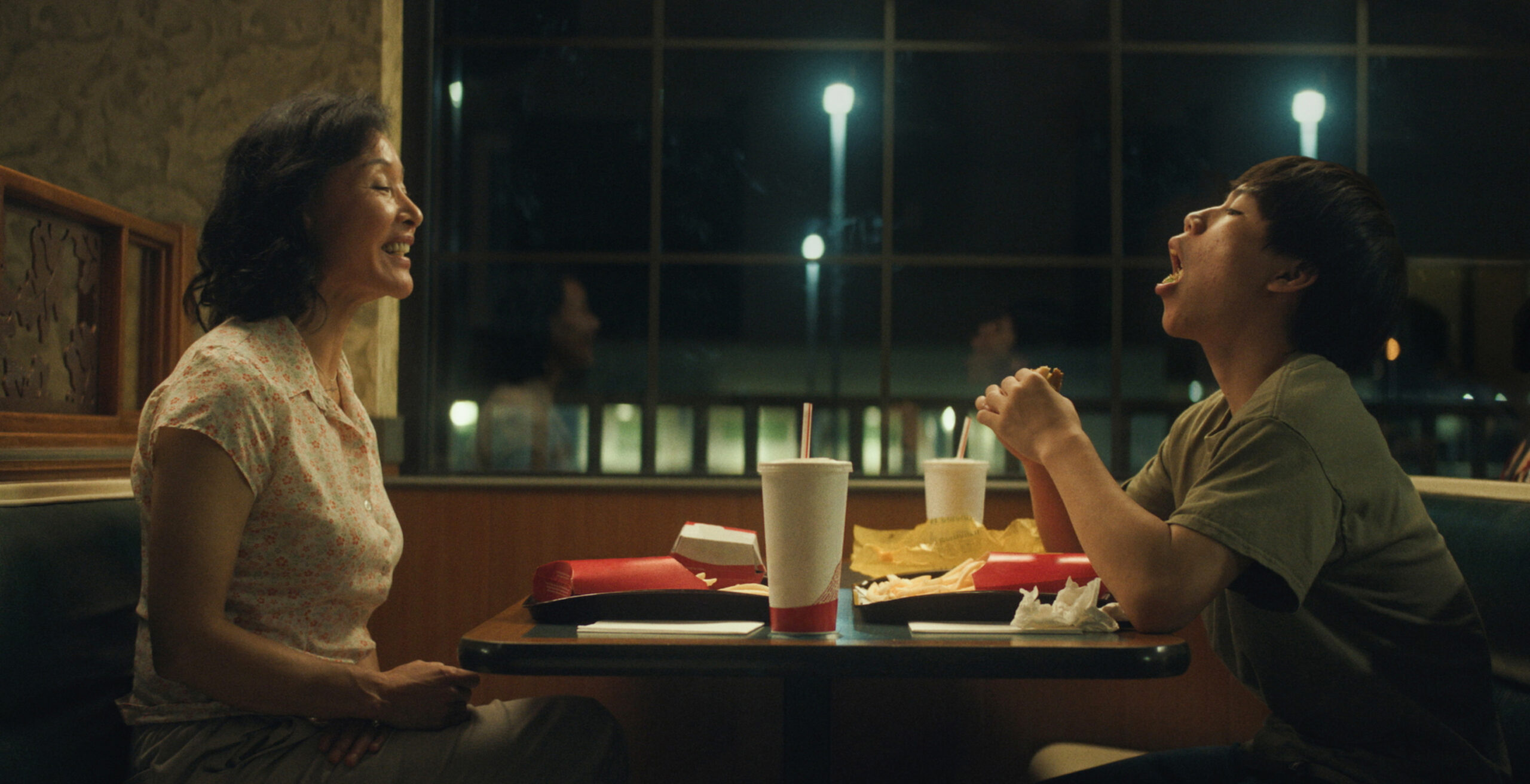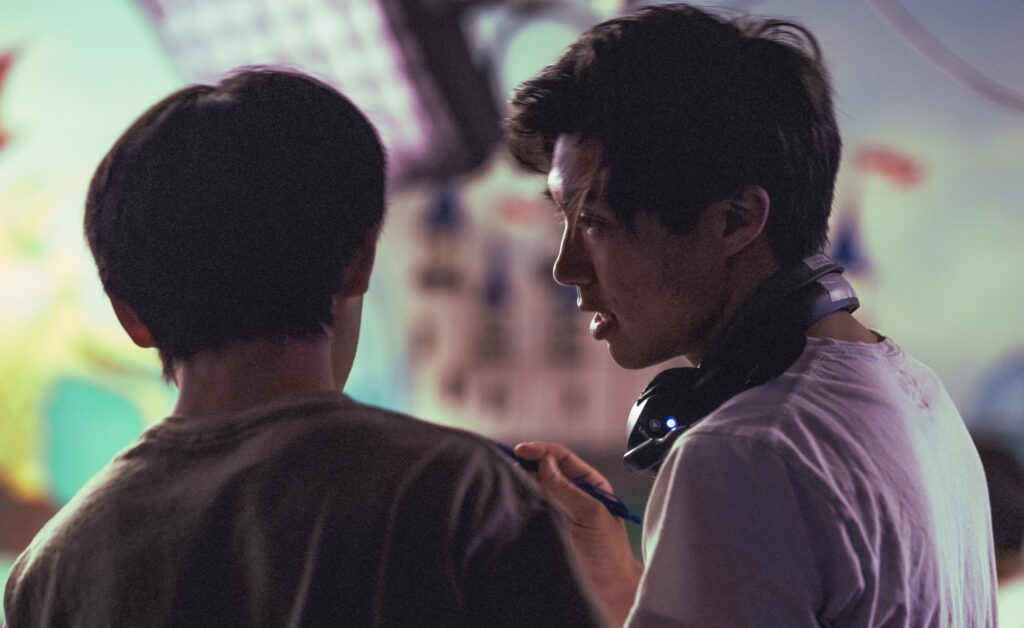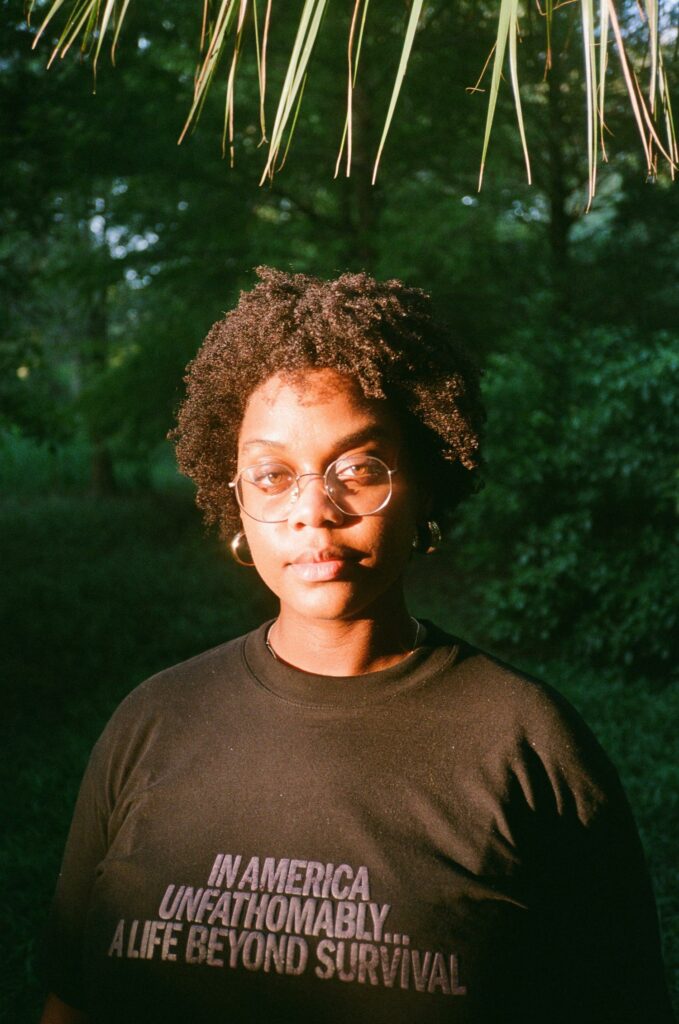Premiering a directorial debut is a career highlight that most creatives will never forget. Landing an Oscar nomination is another dream come true for most filmmakers. For writer/director/producer SEAN WANG, he managed to accomplish both of those goals in the same week.
A Google Creative Lab Five alum, former Sundance Ignite Fellow, and 2023 Sundance Screenwriters and Directors Lab Fellow, Wang excelled early in his career with both short films and documentaries. He made the feature doc Lady of the Harbour, as well as short films including 3,000 Miles, Still Here, and Nai Nai & Wài Pó (which received a 2024 Academy Award nomination for Best Documentary Short Film). With the Oscars race kicking into gear, Wang went to the 2024 Sundance Film Festival to debut his first narrative feature, DÌDI (弟弟).
Dìdi centers on 13-year-old Taiwanese-American Chris (Izaac Wang) navigating a summer of friendship drama, family strife, and YouTube videos, as he prepares to enter high school in 2008 Northern California. Co-starring in the film are Joan Chen, Shirley Chen, and the director’s own grandmother Zhang Li Hua. Following its Sundance premiere, Dìdi won the Best Ensemble Grand Jury Prize and U.S. Dramatic Audience Award, and was acquired for distribution by Focus Features. The coming-of-age dramedy has since gone on to screen at festivals including South by Southwest, Beijing International Film Festival, San Francisco International Film Festival, and Filmfest Munich. Dìdi is in select cities now and expands to theaters nationwide on August 16.
We had a conversation with Dìdi writer/director Sean Wang about bringing this autobiographical story to the screen.
——
COLIN McCORMACK: You’ve taken inspiration before from your life and family in your work. What about this chapter in a young person’s life made you want to focus on it for a feature?
SEAN WANG: I’ve always been drawn to stories of adolescence. Especially in this period of 13 or 14 years old, I think of movies and performances from Stand By Me, The 400 Blows, Ratcatcher, This Is England. There’s something about that age where you’re at the cusp of growing into something else that has always been very potent to me. In looking at all those movies I loved that explored that age and time period, I realized I had never seen a movie that had that tone and starred kids who looked and talked and felt like me and my friends. So, as I was entering my twenties and looking back, it felt like there was stuff there that was interesting to me both from a creative personal standpoint and also felt like an opportunity to try to contribute something different to that canon of movies.
CM: From an outside perspective, it looked like your transition from the documentary world to narrative was seamless. Was there ever any trouble finding support for switching genres?
SW: Surprisingly, no. I think it’s because I never considered myself a documentary filmmaker. I always knew I liked both, but work begets work. My ratio of work was more documentary than narrative so I think people thought I was much more of a documentary filmmaker. It wasn’t a shift as much as it was finally getting to do a different version of what I already wanted to do.
CM: As a viewer of period pieces, it’s always fun to seek out the details that you recognize. What really stuck out for me with Dìdi was the 2008-era tech and websites. What kind of research and design work went into getting all those details right?
SW: For me, it was a lived experience, so the research was just living it and knowing and remembering what certain websites looked like and the websites that I used to go on. Even his bookmarks tab, a lot of those are sites I went to, AddictingGames, Barracks, Miniclip.com. Then in terms of getting it right, back then it was low-fi internet and MySpace HTML, but we’re not using HTML now. We had professional graphic designers making deliberately low-fi websites and they all had to be character-driven and make sense for what that person’s interests were. The research was compiled over the seven years of writing it. Any time I found an interesting MySpace page or a screenshot of Facebook UI in 2008, it was, There’s a reference image. By the time we were putting it all together, I gave it to my assistant editor or graphics animator and said, “Anytime you need a reference, here’s Facebook 2008. Here’s MySpace 2008. Here’s what the photo album looked like,” so we weren’t starting from scratch.
CM: How early, in those seven years of writing the script, were you thinking about the music for the film?
SW: Pretty early. I like listening to music while I write. There’s a playlist I put together for the movie on Spotify and the earliest edition was from 2018. I was thinking about the music already in 2017, I just hadn’t started the playlist. At least six or seven tracks [made the final film].
CM: To find the person to play Chris, were you casting a very wide net or did you have some more focused ideas?
SW: At first, I thought we were probably going to find a complete unknown. Because what 13-year-old Asian kid out there is a bankable [star]? That kid didn’t exist. We wanted someone who was raw and authentic and viscerally a boy and not an actor. And the funny thing is, Izaac — out of everyone in the young cast, with the exception of Shirley — is an actor with a bunch of experience; he’s been acting since he was eight and he was 14 or 15 when we shot the movie. He had worked with my producer Carlos [López Estrada] on Raya and the Last Dragon in a different role, very comedic, big, animated voice acting. He was one of the first people to audition and it was a long process of finding the character together and workshopping it. That was over months of chemistry reads and chipping away and working on it together until I was like, “Okay, I think this is it.” But we always knew from the beginning if we could get him to that place where Chris needs to be, he would be amazing. And we got there together.
CM: On the other end of the spectrum, I would assume that your list of dream actresses to play his mother was much more pinpointed. Possibly one person long?
SW: Maybe this is saying something about the industry, but there aren’t that many actresses who could play that part who give it weight with their name. There are maybe four, and Joan is certainly top of the list.
CM: Joan Chen is also a director. Was this your first time directing a fellow filmmaker?
SW: Yeah, I guess so. And I directed Spike Jonze on this movie [as the voice of a dead squirrel]. For 30 minutes, I was directing an Academy Award-winning filmmaker [laughs].

CM: What lessons and relationships did you bring with you to the film from your time at Sundance and the various labs you attended?
SW: It’s an endless list. I won’t get into the nitty-gritty of hard skills that I learned, but I think more than anything it helped me be more vulnerable and dive deeper into the personal elements of the script and wanting to express something hard to get to on my own. I needed people to push me there and be like, “You need to go deeper.” As far as individuals, Michelle Satter, Ilyse McKimmie, Shira Rockowitz at the Sundance Labs; Lulu Wang, Eliza Hittman, Linda Yvette Chávez, Miguel Arteta, so many people at all of the lab programs I did really made me the filmmaker I am today to have the confidence to be able to direct this movie.
CM: And was Izaac at the Directing Lab with you as part of the scenes you shot there?
SW: Yeah, I got to take him. I did the Directing Lab five or six weeks before production started, so it was a very good prep period essentially. I had that conversation with my producers because they were like, “Are you sure you want to do the Lab? Because it’s going to cut into your prep time.” And I said, “No, I think the Director’s Lab is going to be prep.” In retrospect, our movie would maybe still have been good, but it would have been a very different movie [without the Lab]. Because that lab with Izaac, and I brought Shirley too, it was like our rehearsal time. We didn’t really get rehearsal time on this movie, like a lot of indies don’t, so that week of getting to dig so deep into the character and work with Izaac was formative for us.
CM: In terms of working with the other young talent, some of whom are much greener than Izaac was, did you have to find the right approach that would work with both a seasoned professional and a newcomer? Was there a one-size-fits-all approach with the actors that you found?
SW: No, every actor is different and you find it with each person. You find the things that help them give their best performance. I would say Joan is the only one that had a process. I think all the kids were discovering their process as they went because they never acted before. Joan — and Shirley and Izaac to some extent — had a process and it was [learning] how to calibrate their process to what fits our movie.
CM: Your grandmother is a scene-stealer. What was your sales pitch that got her to agree to act in the film?
SW: I just mentioned it, sort of half-kidding, over the course of two years. It was always, “Oh Grandma, you’re going to play the role, right?” She was like, “No, no, no. I can’t, I can’t.” And then once it got real and we were starting to cast the movie she said, “If you’re that confident that I’ll do a good job, if you really believe in me that much, I’ll do it.”
CM: Filming in your hometown [of Fremont, California], were all the locations planned out ahead of time or was there still room for new discoveries in a place that you know so well?
SW: I wrote to locations in my head, but then you start mapping it out and you see what’s feasible for production. There were locations that I wrote to in my head and we scouted and it was not production-friendly. Then we would find either similar locations that fit or we would change the script a little bit. For example, there was a scene that was set at the mall and that scene ended up being Golf Land. The pieces modulate as you’re putting the movie together and figuring out what works with the budget you have.
CM: Have you been able to screen the film in Fremont yet?
SW: We have in San Francisco, but not Fremont yet. Next week.
CM: Fast-forwarding to January 2024, when you are at Sundance to premiere Dìdi, and the Oscar nominations come out at the same time. What was that week like with all that attention and then also the responsibility to sort of be promoting two films?
SW: Any time someone asks me this question, I feel like a part of my brain processes it in real time. It was insane, truly insane. I’ve had A-list, upper-echelon, seasoned filmmakers that I’ve gotten to meet over the last few months tell me, “Dude, that does not happen to anybody!” I don’t think that has happened to anybody in the history of filmmaking where they premiere their first feature, win Sundance, get nominated for an Oscar, and sell their movie in the span of five days. I’m obviously very grateful. It’s a very new experience to be thrust into. You’re catching me processing it live, but it’s been really cool.
CM: Now that you have been thrust into this next level, what’s going to be next for you?
SW: Releasing this movie. And then turning 30 [laughs].
__
Thanks to Sean for talking to us about DÌDI. Learn more about the film at the Focus Features website.
This interview has been edited for clarity.
If you’re an independent filmmaker or know of an independent film-related topic we should write about, email blogadmin@sagindie.org for consideration.



